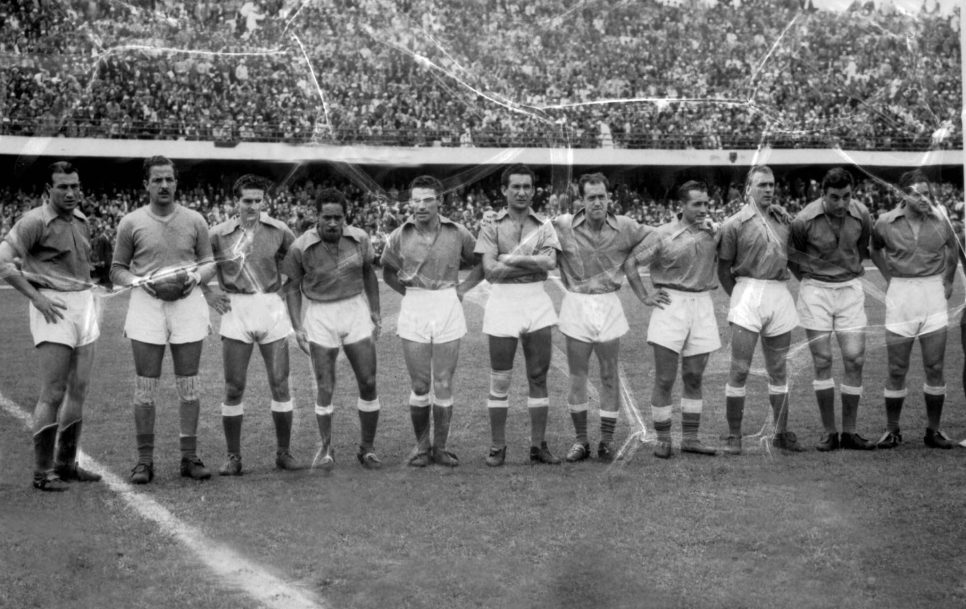Blue ballet: the untold tale of the football club who ruled the world
When thinking of the best football teams, Pep Guardiola’s Barcelona, Sir Alex Ferguson’s Manchester United, and Arsène Wenger’s Arsenal from the early 2000s are the first to come to mind. More than 70 years ago, that throne was occupied by a team from South America.
And no, this is not a world-famous team like the Argentine giants River Plate or Boca Juniors. Yet, this club’s golden era is closely connected with the former.
Argentinian footballers went on strike in 1948 because the league in what was one of the world’s strongest footballing nations was not professional. Thousands of kilometers away, Colombia looked at the turmoil and sought to benefit.
Their rise to the strongest league in the early 1950s didn’t happen organically. Colombia’s league turned professional in 1948, but disputes led DIMAYOR, the organization responsible for running the league, to split from the national federation.
FIFA, the world football governing body, disapproved of this and banned both the Colombian clubs and national teams from participating in international competitions. DIMAYOR, however, was fine, as being football pirates gave them much more freedom than usual.
Since Argentinian footballers were striking and seeking ways to earn money, they set their sights on Colombia. The club that drew the longest straw was Millonarios, based in the capital, Bogotá.
Stars arrived without transfer fees
Leaving FIFA meant that if Colombian clubs wanted to sign someone, they could do so without paying a transfer fee. Since the players were offered very high salaries, they weren’t too concerned about the opposition from their teams.
The period known as El Dorado lasted from 1949 to 1954, and Millonarios first made waves by signing strong foreign players. Led by club chairman Alfonso Senior, the first significant transfer came in June 1949 when Adolfo Pedernera, considered one of the world’s best players in the 1940s, was signed from River Plate.
But that wasn’t all. Senior managed to lure one of history’s greatest players, Alfredo Di Stefano, along with other Argentinian stars like Julio Cozzi and Néstor Rossi. The club also looked towards Europe, bringing Billy Higgins from England and Bobby Flavell from Scotland.
Millonarios’ actions spurred other Colombian clubs to follow suit. Many great players from South America and Europe were brought in, with Atlético Junior particularly active in Europe, acquiring five Hungarians. It’s worth remembering that Hungarians were among the strongest footballing nations in the late 1940s and early 1950s.
Magical Millonarios
For some Europeans, moving to Colombia could have been smoother sailing. Higgins returned to England after five months, complaining that although he was promised a lot of money, the promises weren’t fully kept. Upon returning home, he had only 19 pounds in his pocket, and the English Football Association banned him from playing for a while.
Flavell lasted longer, a year and a half. But upon returning to Scotland, he, too, was punished. In addition to a six-month suspension, he was fined 150 pounds, which was then a record in Scottish football.
And perhaps even more painfully, Flavell couldn’t continue his career in Heart of Midlothian. When the beloved forward left for Colombia, manager Dave McLean vowed that he would never play for them again. The word was kept, as Flavell was sold in early 1951.
Those players who stayed longer at Millonarios put on a real show match after match. With a core of Argentinian players from River Plate, the club won four out of six league titles during the El Dorado. In 1950, they were bested by Once Caldas and four years later by Atlético Nacional. It’s worth noting that foreigners had to return home by the end of 1954 for the FIFA sanctions to be lifted. This most affected Millonarios.
The Colombian powerhouse didn’t shine only at home. For example, in March 1952, they traveled to Madrid, where Real Madrid celebrated their 50th anniversary with a tournament. Initially, the club had invited River Plate from South America, but upon hearing about Millonarios’ prowess, they asked the Argentinians not to come and instead turned to the Colombian team.
Di Stefano, Pedernera, and other stars spoiled the hosts’ party. In the first match, Millonarios drew 2-2 with Swedish champions Norrköping, then defeated Real 4-2 in the second game.
Four months later, Real had a chance for revenge. In a friendly match held in Bogotá, they took the lead but ultimately lost 2-1 to Millonarios. Di Stefano also scored, watched by none other than Che Guevara from the stands, who loved football and whose greatest idol was Millonarios’ star forward.
Real didn’t travel to South America for just one match but for an international club tournament in Venezuela, where they played alongside Millonarios, Botafogo (Brazil), and La Salle (Venezuela). Although Real won it thanks to a better goal difference over Botafogo, they drew 1-1 twice with Millonarios.
The tournament was held again at the beginning of 1953. Millonarios, coached by player-manager Pedernera since 1951, faced River Plate and one of Europe’s strongest, if not the best, teams, Rapid Vienna. The Colombian team didn’t lose a match and were crowned champions, with Di Stefano leading the way as the top scorer with four goals.
Football historians on both sides of the Atlantic have repeatedly named the Millonarios of the El Dorado era as the best team in the world at that time. More important than the titles—they won two Colombian cups in addition to four league trophies —were the performances they put on the field that dazzled the fans.
Thanks to this, Millonarios became known as the El Ballet Azul or Blue Ballet. Di Stefano also praised them, saying he didn’t expect to find a team with such a perfect game as Millonarios.
But that’s precisely what Millonarios did.







